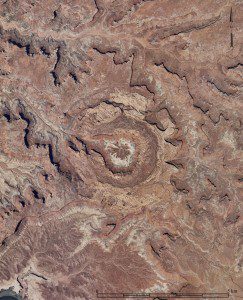Ken Ham and other young-Earth creationists tell us the universe is 6,000 years old.
The universe says different.
Here are a few more things recently in the news that are older than Ken Ham’s universe.
1. Thirty-four 7,500-year-old cheese strainers unearthed in the Kuyavia region of Poland. Cheese-strainers is just a guess — they’ve got holes in them, and researchers found evidence of milk-fat residues in the holes. But “They could well have been flame covers, chafing dishes, honey strainers or used for beer-making, to strain out chaff.”

2. The 50,000-year-old leather-working tools found in a cave in France. The big news there is not that these tools are 44,000 years older than the YEC universe. The big news there is that these are Neanderthal tools and that they’re more sophisticated than anything we had 50,000 years ago.
3. Gobleki Tepe. At 11,000 years old, or so, the monoliths in Turkey are older than Stonehenge or the Pyramids. Scientists think they’re religious in nature, but aren’t really sure because scientists don’t listen to Coast to Coast AM and therefore dismiss Zecharia Sitchin as a crank.
4. The rodent-like Rugosodon eurasiaticus lived 160 million years ago. They were multituberculates — a category of early mammals that died out about 35 million years ago. Extinction is sad, but 125 million years is a pretty good run.
5. This one’s kind of borderline: Residue-encrusted pottery fragments show that ancient humans used mustard as a spice. The fragments were found at three sites in Denmark and Germany. The youngest of those sites dates back 5,750 years, but the oldest dates back about 6,100 years. So humans were cooking with mustard a century before Ken Ham’s Eden.
6. A scorpion-like fossil recently found in South Africa is evidence of the earliest-yet discovered land creature living on what was then Gondwanaland, 350 million years ago.
7. Upheaval Dome in Cayonlands National Park, Utah. It’s about 170 million years old. Joel Duff went there and took some amazing pictures (even better than the one above, from Wikipedia). Duff describes the site:
This crater is not what you might expect. There is a large mound in the center. The idea here is that this is a very very old crater. One that was caused by a meteorite impact after the thick sandstone layers were laid down but then this entire area was covered by additional rock which has since eroded revealing this former scar on the earth.












